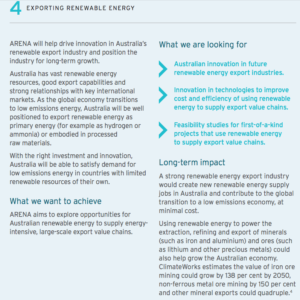CSIRO Membrane: Ammonia to High-Purity Hydrogen
By Trevor Brown on May 05, 2017
In Australia this week, CSIRO announced funding for the “final stages of development” of its metal membrane technology to produce high-purity hydrogen from ammonia. The two year research project aims to get the technology “ready for commercial deployment,” with industrial partners including Toyota and Hyundai.
This week, we wrote about a technology from Oita University, in Japan, that also “cracks” ammonia into hydrogen. The new Japanese process enables on-board partial cracking of ammonia into a hydrogen-ammonia mix, from a cold start, to fuel internal combustion engines. The Australian technology, however, is designed to be installed beside hydrogen fueling stations to create an on-site supply of “high-purity hydrogen for use in fuel cell vehicles.” This would enable large-scale storage and transportation – even international import/export – of renewable hydrogen contained in ammonia.
CSIRO’s membrane reactor technology will fill the gap between hydrogen production, distribution and delivery in the form [of] a modular unit that can be used at, or near, a refuelling station …
Currently, the transportation and storage of hydrogen is complex and relatively expensive, making export commercially challenging.
The membrane will allow hydrogen to be transported in the form of ammonia (which is already being traded globally), and then reconverted back to hydrogen at the point of use.
CSIRO: Membrane to fill gap in hydrogen export market, 03/05/2017
This announcement, and the identification of this technology as meeting a crucial need within the research and development portfolio, is part of the drive across Australia toward using ammonia as a means of exporting renewable energy on an international scale – replacing income from coal and LNG exports with income from renewable energy exports.
This is a theme we’ve written about often, including concentrated solar fuels, low-carbon ammonia product labeling, CSIRO’s energy management technologies, and Australia’s solar ammonia export market.
Chair of Renewable Hydrogen, Brett Cooper believes CSIRO’s membrane technology can enable a new, and potentially carbon-free, export industry for Australia that could match the scale of the current LNG industry.
“With this technology, we can now deliver our renewable energy to Japan, Korea and across the Asia-Pacific region in liquid form, as renewable ammonia, and efficiently convert it back to pure hydrogen for cars, buses, power generation and industrial processes,” Mr Cooper said.
This market didn’t exist 10 years ago – now Australia is positioned to be the number one renewable fuel provider in the world’s fastest growing region.”
CSIRO: Membrane to fill gap in hydrogen export market, 03/05/2017

In another, associated, major step forward for the acceptance and advancement of ammonia energy, the Australian renewable energy funding agency, ARENA, recently published its 2017 Investment Plan, in which it identifies renewable ammonia as a funding objective, under “Priority 4 — Exporting renewable energy.”
Specifically, as regards CSIRO’s membrane technology, ARENA is looking to fund “projects to incorporate renewable energy at key points in the export process.” However, ARENA is also funding the “demonstration of renewable production methods for transportable energy storage options (such as hydrogen or ammonia).”
While I’ve written about Australian ammonia synthesis technology development only briefly in the past, I guarantee I’ll be writing more about it soon.